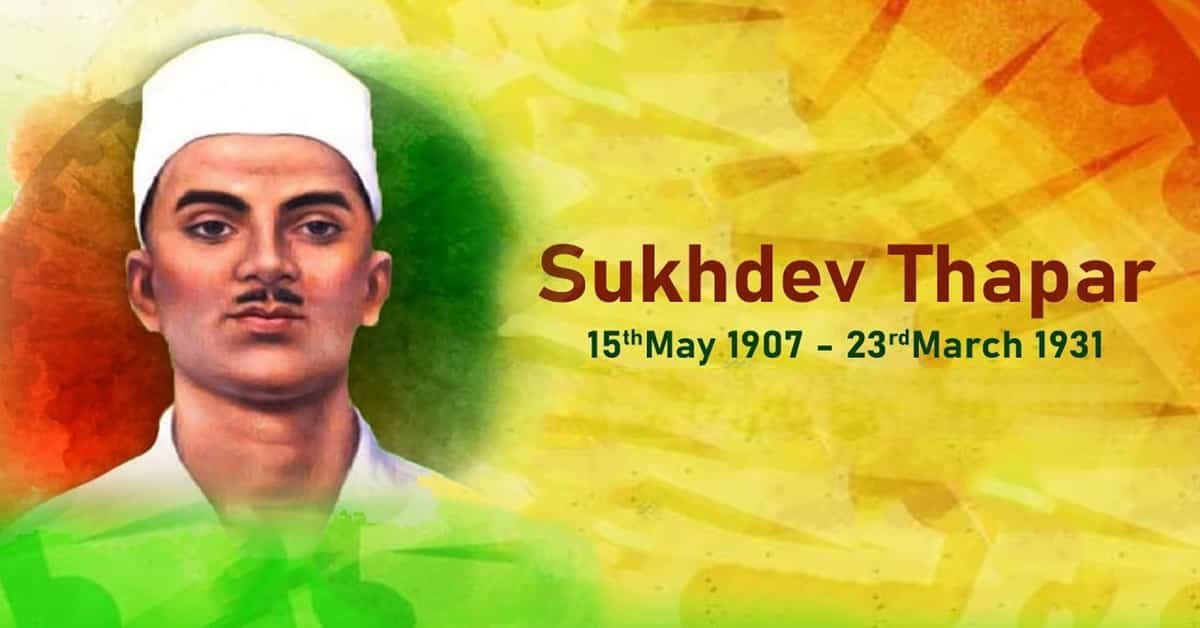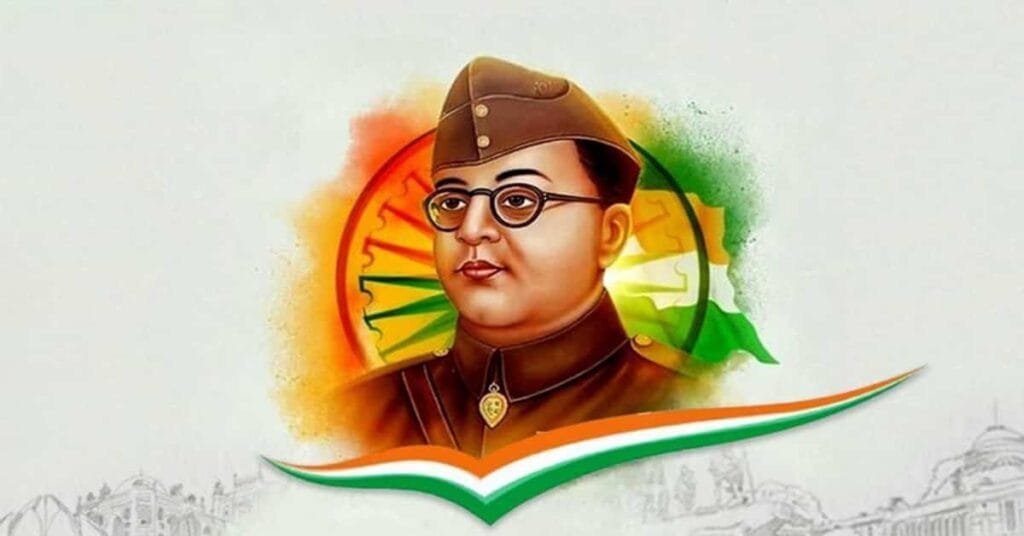Title: Sukhdev Thapar: The Unyielding Spirit of a Revolutionary
Ladies and gentlemen, respected teachers, and dear friends,
Today, I have the honor to talk about a key figure in India’s struggle for independence—Sukhdev Thapar. Born on May 15, 1907, in Ludhiana, Punjab, Sukhdev was not just a revolutionary but also a visionary whose unwavering commitment to the cause of freedom continues to inspire us.
Early Life and Influences
Sukhdev Thapar was born into a politically aware family. His early life was influenced profoundly by the prevailing socio-political conditions in India under British rule. Growing up in Punjab, he was exposed to the growing resentment against colonial oppression, which sparked his early interest in politics. As a student, he was passionate about literature and history, which shaped his understanding of Indian nationalism and the need for a radical change.
In 1920, when he was just 13 years old, Sukhdev joined the Ghadar Party, which advocated for independence through revolutionary means. His involvement with this group marked the beginning of his active participation in the freedom struggle.
A Leader of the Youth
By the time he entered college at the National College in Lahore, Sukhdev had become a prominent leader among his peers. He formed strong bonds with other young revolutionaries, including Bhagat Singh and Shivaram Rajguru. Together, they believed that mere constitutional reforms were inadequate to liberate India from British rule. They were inspired by the idea of armed struggle and the necessity to awaken the masses to the call for independence.
Sukhdev took on the role of an organizer and mentor, urging the youth to take a stand against oppression. He helped establish the Punjab Student Federation and was instrumental in the formation of the Hindustan Socialist Republican Association (HSRA), an organization that sought to achieve independence through revolutionary activities.
Key Contributions
Sukhdev emerged as a prominent member of the HSRA and worked closely with Bhagat Singh and Rajguru in executing their revolutionary plans. The most notable event that solidified their legacy was the assassination of British police officer J.A. Saunders in 1928, a retaliation for the death of nationalist leader Lala Lajpat Rai, who died after being injured during a police baton charge.
This act was a turning point in the revolutionary movement and demonstrated the courage and commitment of these young freedom fighters. Following this mission, Sukhdev and his comrades undertook various revolutionary activities, including bombings and protests, aimed at raising awareness and pushing for independence.
Imprisonment and Trial
In 1929, Sukhdev and Bhagat Singh threw non-lethal bombs in the Central Legislative Assembly in Delhi to make a statement against repressive laws. After this act, they surrendered to the police, using the courtroom as a platform to express their revolutionary ideas and draw attention to the injustices of British rule.
The trial that followed became a national sensation, highlighting the plight of political prisoners and garnering mass support for their cause. Sukhdev seized this moment to articulate the dreams of millions of Indians yearning for freedom and justice.
Martyrdom
On March 23, 1931, Sukhdev Thapar, along with Bhagat Singh and Rajguru, was sentenced to death. Their execution became a rallying point for the Indian independence movement. The day they were hanged marked a significant moment in our history, galvanizing the youth and increasing anti-colonial sentiment across the nation.
Sukhdev was only 23 years old at the time of his death. His sacrifice, along with that of Bhagat Singh and Rajguru, instilled a sense of urgency in the fight for independence. They became martyrs, symbols of courage and selflessness in the face of tyranny.
Legacy
Sukhdev Thapar’s legacy lives on in the hearts of millions. He is remembered not only for his revolutionary activities but also for his unwavering belief in the power of the youth to bring about transformative change. His life serves as a reminder of the significant role young people can play in shaping the future of their nation.
Today, we gather to commemorate his contributions, honoring the sacrifices made by him and his comrades. Their ideals of unity, justice, and equality continue to resonate with our quest for a better society.
Conclusion
In closing, let us remember Sukhdev Thapar as a symbol of bravery and selflessness. His commitment to the cause of Indian independence and his faith in the youth’s potential to effect change offer us invaluable lessons.
As we reflect on his life, let us draw inspiration from his courage to speak out against injustice and stand firm in our convictions. The spirit of Sukhdev Thapar urges us to question the status quo, to fight for our rights, and to contribute positively to our society.
May we carry forward the torch of freedom and justice that he and his comrades so valiantly held high, working towards an India that reflects the values they fought for.
Thank you.
FAQs about Sukhdev Thapar
Here are some frequently asked questions (FAQs) about Sukhdev Thapar, along with concise answers:
1. Who was Sukhdev Thapar?
Sukhdev Thapar was an Indian revolutionary and freedom fighter, known for his significant role in the struggle for India’s independence from British rule. He was a close associate of Bhagat Singh and Rajguru in the Hindustan Socialist Republican Association (HSRA).
2. When and where was Sukhdev born?
Sukhdev Thapar was born on May 15, 1907, in Ludhiana, Punjab, India.
3. What motivated Sukhdev Thapar to join the freedom struggle?
Growing up in a politically conscious family, Sukhdev was influenced by the oppressive conditions under British colonial rule and was deeply inspired by the independence movement, which motivated him to fight for freedom through revolutionary means.
4. How did Sukhdev Thapar contribute to the revolutionary movement?
Sukhdev played a pivotal role in organizing youth against colonial oppression, forming groups like the Punjab Student Federation, and participating in key revolutionary activities, including the assassination of J.A. Saunders in 1928 as a retaliation for the death of Lala Lajpat Rai.
5. What was the role of Sukhdev in the Central Legislative Assembly bombing?
In 1929, along with Bhagat Singh and Batukeshwar Dutt, Sukhdev was involved in the planning of the bombing in the Central Legislative Assembly to protest against repressive laws. They surrendered after the incident to use the trial as a platform to promote their revolutionary ideas.
6. Why was Sukhdev Thapar imprisoned?
Sukhdev was imprisoned following the assassination of J.A. Saunders and his involvement in revolutionary activities. His trial became a significant event as it highlighted the struggle for freedom and the injustices faced by political prisoners.
7. When was Sukhdev executed, and what impact did his execution have?
Sukhdev Thapar was executed on March 23, 1931, along with Bhagat Singh and Rajguru. Their martyrdom ignited widespread protests and support for the independence movement, transforming them into symbols of resistance against colonial rule.
8. What are some notable qualities of Sukhdev Thapar?
Sukhdev was known for his bravery, dedication to the cause of independence, commitment to socialism, and his belief in the power of youth to effect change. He demonstrated immense courage in standing up against British oppression.
9. How is Sukhdev Thapar remembered today?
Sukhdev Thapar is remembered as a national hero and martyr. His contributions to the freedom struggle are commemorated in India, and he is celebrated for his sacrifices in the pursuit of justice, equality, and freedom.
10. What is the legacy of Sukhdev Thapar?
Sukhdev’s legacy continues to inspire young people and activists in India. He represents the spirit of youthful defiance and the importance of fighting for righteousness. His life serves as a reminder of the sacrifices made for the country’s freedom and encourages future generations to stand against injustice.

